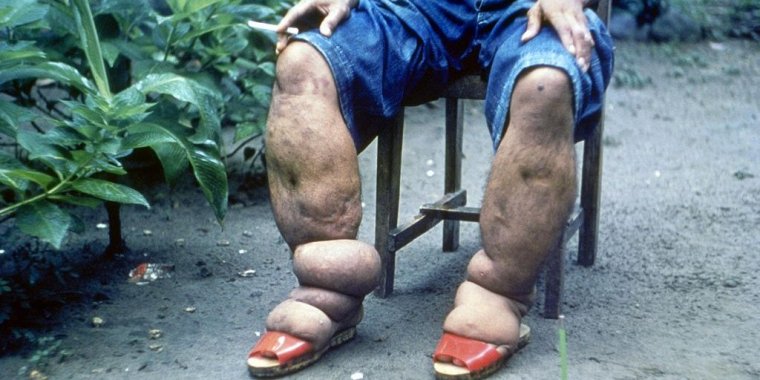| News / Tech News |
New portable device to gauge severity of elephantiasis
A portable 3-D scanning device developed by Sri Lankan and US researchers can quickly measure limb enlargement of patients with the disfiguring condition elephantiasis that resulted from lymphatic filariasis infection.

Elephantiasis of leg due to filariasis. ![]()
The device consists of an infrared sensor mounted on an iPad that produces highly accurate 3-D reconstructions of the legs — the limbs most commonly affected by lymphedema or fluid accumulation from blocked lymphatic vessels.
Healthcare workers assess the severity of lymphedema by using a tape measure or by relying on water displacement by the affected limb. Often, this is impractical for leg measurements.
Originally developed to measure lymphedema in cancer patients following surgical removal of the lymph nodes, the new device has been adapted for those afflicted by elephantiasis caused by lymphatic filariasis infection.
Lymphatic filariasis is a mosquito-borne disease that often leaves its victims with disabling hydrocele (accumulation of fluid in the scrotum), lymphedema or elephantiasis after the infection has cleared.
According to the WHO, infections typically occur during childhood but may go unnoticed, leading to a permanently impaired lymphatic system. (SciDev.Net)
YOU MAY ALSO LIKE



